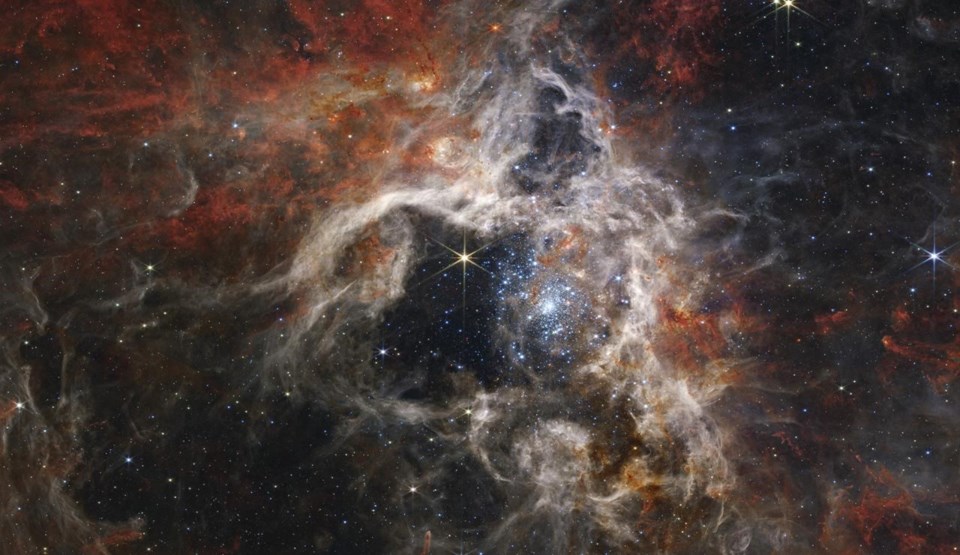EDMONTON — It's as if they were using a telescope not just to peer into space, but also into time.
Canadian scientists are already using spectacular data and images from the recently launched James Webb Space telescope to look backward into some of the oldest stars ever studied and forward into how new stars and planets are born.
"One of the holy grails of astronomy is to find stars that are the first stars to have formed after the Big Bang," said Ghassan Sarrouh of York University, a co-author of a study on star clusters that's already been published using James Webb data. "That's what we think these are -- the earliest stars."
On the other end of time, Western University's Els Peeters is looking into the future by studying hot young stars in the constellation Orion and their influence on the interstellar material around them.
"In that material is where the next generation of stars will be born," she said.
Don't forget the planets. A group at University of Montreal is looking at exoplanets -- especially Earth-sized ones with water and other essential elements in their atmosphere that just might host life.
"We've already had a first result," said Nathalie Oullette. "About a month ago was the first detection of carbon dioxide in an exoplanet."
The James Webb is the result of $13 billion and more than two decades of work. The successor to the Hubble Space Telescope, Webb orbits much deeper in space and is anywhere from a hundred to a million times more sensitive.
Two of its major components -- one machine that aims the telescope with stunning precision and another that analyzes light far beyond the visible spectrum -- were designed and built in Canada. That has given Canadian researchers the right to claim five per cent of the telescope's observation time.
Scientists are almost giddy over the quality of what they're getting back.
"Astounding," said Erik Rosolowsky of the University of Alberta, who's using Webb's infrared capabilities to study how black holes create voids in interstellar dust, the spawning grounds for new stars. "It's like someone's given us a set of X-ray specs."
Oullette said before Webb, astronomers could spend days going through murky data, separating signal from noise.
"It is quite remarkable how clean (Webb's) data is." she said. "With Webb, there's no having to dig through the data to find the signal."
Sarrouh puts Webb images side-by-side with those from Hubble.
"You can just see one set of images is really blurred and fuzzy. The other is full of all these really sharp points that just sparkle."
The results are pouring in. Rosolowsky and his team already have 21 papers in the works.
And already, scientists are feeling their mental star maps shift.
It looks, for example, that things may have started up much sooner after the Big Bang than previously thought, said Oullette.
"Maybe structure started earlier than we had thought and galaxies started forming earlier than we thought."
Rosolowsky has confirmed the existence of black holes so large they leave great holes in the centre of galaxies where stars would normally be created.
"We can see straight through and say this black hole is ripping apart all these proto-stars before they get going."
Peeters calls it a new era in astronomy.
"It's only operational for three months and already we've learned so much."
Sarrouh said it's a good time to be a Canadian astronomer.
"It will allow us to see into a time we've never seen into before. You can almost think of the James Webb as a time machine."
This report by The Canadian Press was first published Oct. 10, 2022.
-- Follow Bob Weber on Twitter at @row1960
Bob Weber, The Canadian Press



